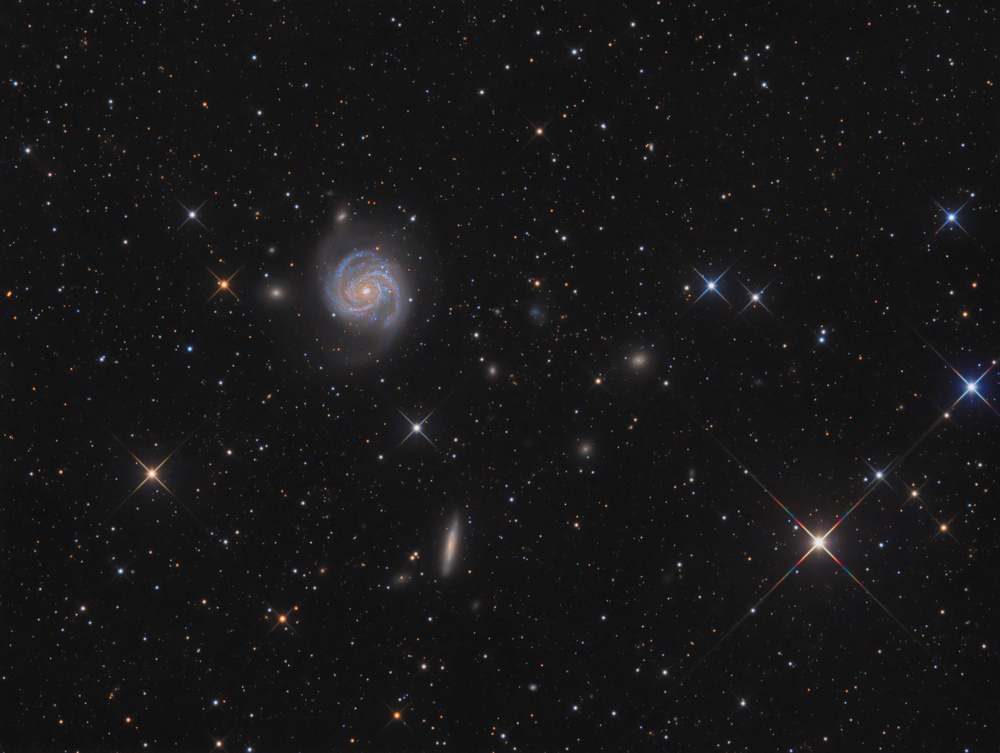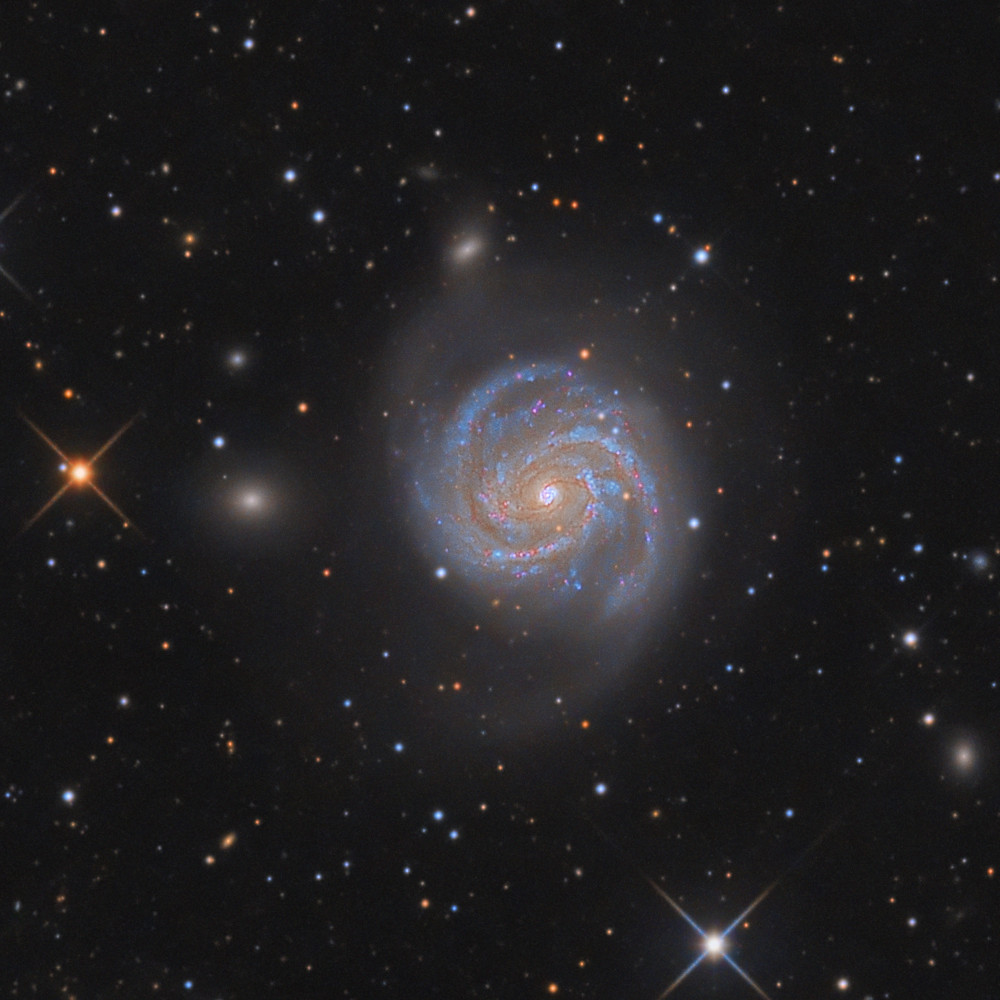Messier 100

MouseOver for object identification, Click on image for a zoomable image
Full resolution crop:

|
Location / Date |
Zellerndorf, March 2017 |
|
Telescope / Mount / Guiding |
ASA 10" Astrograph, ASA 3" Wynne-Corrector (focal length 910 mm) |
|
Camera / Exposure |
FLI ML8300 with Astrodon filters L 48 x 10min, R 13 x 10min, G 13 x 10min, B 14 x 10min Total exposure time: 14h 40min |
|
Processing |
PixInsight, Fitswork, Photoshop |
|
Notes |
Messier 100 (also known as NGC 4321) is an example of a grand design intermediate spiral galaxy located within the southern part of constellation Coma Berenices. It is one of the brightest and largest galaxies in the Virgo Cluster, located approximately 55 million light-years distant from Earth and has a diameter of 107,000 light years. The galaxy has a brilliant core, two prominent arms of bright blue stars, several fainter arms and a few dust lanes. The blue stars in the arms are young hot and massive stars which formed recently from density perturbations caused by interactions with neighboring galaxies. Intense star formation activity was found to take place in a ring of starburst activity along the periphery of the galaxy’s innermost spiral arms. Two satellite galaxies (NGC 4323 and NGC 4328) are connected with M100 by a bridge of luminous matter. |